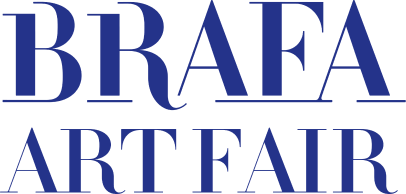IMAGE DETAILS

Galerie Raf Van Severen
Gustave Van de Woestyne (Ghent 1881-1947 Brussels)
Adrienne De Zutter au violon, 1920
Oil on canvas
208 x 110 cm
Signed bottom left
Dedicated 'To Adrienne De Zutter', signed with the artist's initials and dated on the back
Provenance: collection of the model, Adrienne De Zutter (1905-1989), future Mrs. Paul Van de Woestyne (1905-1963), himself the son of the writer Karel Van de Woestyne (1878-1929) and nephew of the painter; private collection, Europe (by descent to the current owners, grandchildren of the model and great-grandnephews of the painter)
Literature: Kultureel Centrum Mechelen, Gustave Van de Woestyne, 1841-1947, 1967; Museum Voor Schone Kunsten, Ghent, Gustave Van de Woestyne, 2010, n° 78
“Adrienne De Zutter au violon” is a masterclass by the Belgian painter Gustave Van de Woestyne (1881–1947). Van de Woestyne was a prominent member of the first group of the ‘School of Latem’, and this portrait is a beautiful example of his very distinctive and own personal style. On a first and quick look, we see a majestic lady, gracefully rising above the landscape, painted in peaceful duff coloring. Her violin in hand and modestly dressed, she is depicted in a fairytale landscape composed of two trees with graceful silhouettes, perhaps umbrella pines, rising from stylized valleys, and a rose, worthy of Saint Exupéry's Little Prince, in the foreground on the right. The upper part of the sky is simply described by means of a royal blue band in the manner of Hiroshige prints. How do we analyze this? Where does this come from?
First, for his technique, we need to go back to Van de Woestyne’s youth. In 1902, a young Gustave went to an exhibition for the first time, one of the Flemish Primitives, like Jan van Eyck and Pieter Bruegel. It would leave an eternal mark on him. Gustave uses a sharp outline of the figures in his works, resulting in a sober and symbolic representation of the model.
Secondly, regarding the color palette, we take a little step in Gustave’s life. At the time of the execution of the painting, Gustave had huge admiration for Douanier Rousseau. However, the actual inspiration for the coloring lies in Italy. In 1913, he toured Florence and Tuscany with Valerius De Saedeleer. The many fresco’s and mural paintings have a typical softer and lighter use of colors. So, we can say that, regarding coloring he leaned less towards the warm and dark coloring of the Flemish Primitives and more to the works of their Italian contemporaries.
At the outbreak of the First World War, the Van de Woestynes fled the country, only to return in 1919. Around that time, Van de Woestyne soon settled with his family in in the Rozenhuis (or House of Roses) in Waregem, belonging to art lovers and philanthropists Charles De Zutter and his wife Marguerite Taelman. It was here, Van de Woestyne made a portrait of their daughter Adrienne De Zutter.
The ties between the De Zutter and Van de Woestyne families predate the Great War. Beyond these friendly relations, the couple played a genuine role as patrons for the artist, as is evident from the booklet of the Van de Woestyne retrospective in Brussels (Palais des Beaux-Arts, 1929). In an unpublished supplication that the painter addressed, on February 5, 1929, to Marguerite Taelman to encourage her to lend her works after an initial refusal, he also stated: 'Without your paintings I must not show those of other collections because, as you know as well as I do, yours are the best.' If it is therefore very likely that the portrait of Adrienne was commissioned by the De Zutters, it is also possible to imagine that Gustave was touched by the languid and pale beauty of his model, who would marry the eldest son of his brother Karel in 1929. The exceptional quality of this painting and detailed story behind it, elevates it to the status of an absolute masterpiece.



 download image
download image